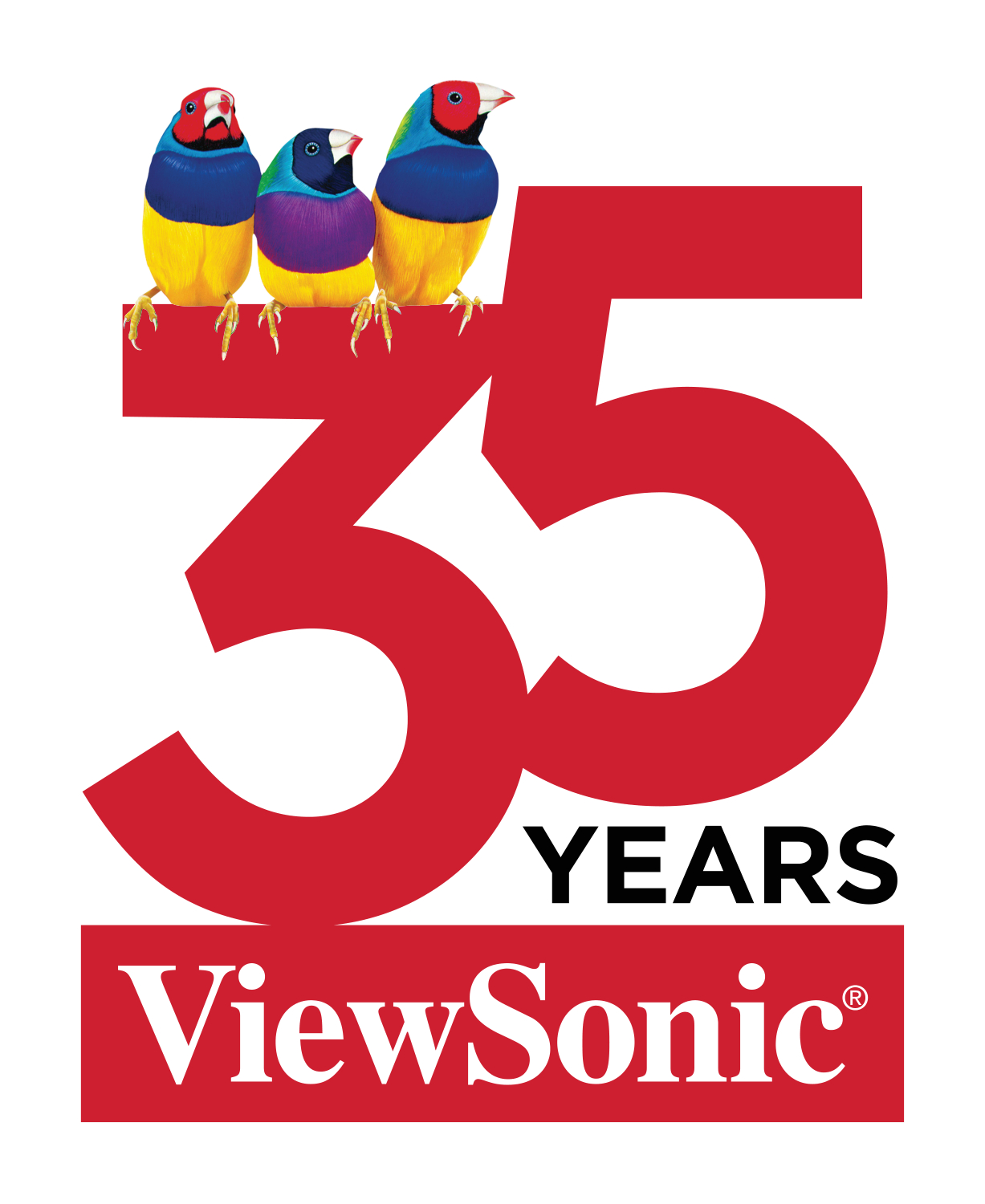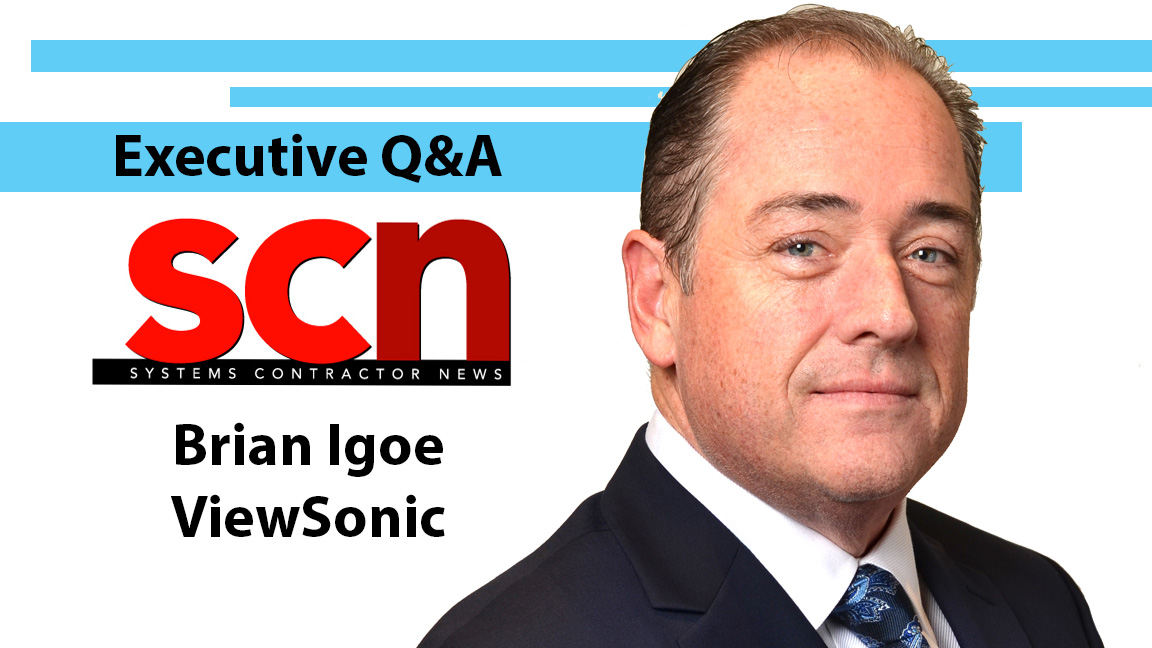SCN: How long have you been with this company, and what are your responsibilities?
Brian Igoe: I’ve been with ViewSonic for 27 years. I currently head up North American sales.
SCN: How is ViewSonic celebrating its 35th anniversary?
BI: ViewSonic will celebrate its anniversary in the same way that we have grown our business, and that’s by celebrating with our partners. ViewSonic was born of the channel, and we remain dedicated to our partners.
They’ll see a series of promotions, special pricing, SPIFs and activities to celebrate this milestone. Our end customers will also see special offers throughout the year.
No anniversary would be complete without a party, and we’ve had a few this year and plan to host an event at CES 2023 in January to keep the celebration going. It’s a big milestone.

SCN: The Pro AV industry is always changing, but what are some of the really big shifts you’ve seen in the past decade?
BI: The Pro AV market is expected to grow to, I think I’ve seen, $230 billion by 2023, and I believe this is due to enhancements in display technologies, IoT for smart buildings, IT and the cloud, and artificial intelligence.
A shift is an increase in demand for larger-sized displays. The CE and Pro AV markets have always pushed for bigger screen sizes, and we’re definitely seeing growth in the 86-98-inch touch-display category, especially in enterprise conference rooms.
Also, conferencing and collaboration solutions are highly requested. We’re finding customers looking for all-in-one type solutions, for hardware and software. As a company, ViewSonic has been making this shift into becoming a solutions provider, so I think it positions us nicely to grow with our partners and their needs in this market.
SCN: What are the short and long-term goals for your company?
BI: Short term? To deliver innovative solutions to optimize productivity and collaboration in business and educational environments. Long term? As needs change in the market, ViewSonic will change our product lines to match what our partners need to grow their businesses. Solutions like larger displays, easier connectivity options, and better management tools and software to keep students connected and workers productive are what we’re going to strive to bring to market.
SCN: With so many product lines, how has ViewSonic navigated through recent supply chain issues?
BI: Well, the supply chain has presented some challenges over the last year for just about everyone, but I think ViewSonic has managed it well. The key was and is to set expectations and clearly communicate with our customers and partners about products and SKUs that have been delayed.
As needs change in the market, ViewSonic will change our product lines to match what our partners need to grow their businesses.
SCN: The use of laser light sources appears to the future of projectors, so why are lamp-based projectors still popular?
BI: Laser projectors have really become accessible for a larger audience. They deliver saturated colors, high brightness, and a much larger lifespan than lamp-based projectors. In the long run, laser may be more cost-effective than lamps—but for now, there is still a premium with these projectors. And that’s it in a nutshell: price.
If you don’t need to display detailed visuals or video—say you are using a projector for meetings where you are showing charts, spreadsheets, and the like—then a lamp-based projector will be just fine. Same with brightness. In most office settings, you won’t need the extra lumens and there’s no need to pay for them.
[Large-Venue Projectors: Key Features for Presentations in Big Spaces]
When looking to buy a projector, take the color and brightness into consideration. But when looking at the cost, look at the overall cost, not just the immediate checkout price. You have to consider that lamp projectors are cost-effective up front, but when you factor in the cost of replacement bulbs and the overall life of the projector, laser may be a better investment. Of course, ViewSonic has a line of lamp and laser projectors to fit all needs.
SCN: ViewSonic has two lines of gaming monitors. How important has esports become to Pro AV, and is it an area of growth for your company?
BI: Esports is exploding. It was already a fast-growing market, but the pandemic really seems to have accelerated it. There has been a significant increase since 2016, and in 2020 there were 272 million occasional viewers and 223 million esports enthusiasts for a combined audience of close to 475 million.
For reference, the 2019 League of Legends World Championship drew more than 100 million viewers worldwide. The 2019 Super Bowl drew in 112.3 million viewers.
This is a new and booming market for the Pro AV channel and our partners. High schools and colleges are starting esports teams, designing labs and esports auditoriums, as well as professional esports stadiums.
ViewSonic has two gaming monitor lines. The ELITE series is our flagship gaming monitor line that offers the absolute best features, performance, and technology for esports professionals and gaming enthusiasts. Then, there is the OMNI line, which is a comprehensive line of competitively priced gaming monitors with a wide array of features for the casual gamer.
[The State of Esports in Higher Education]
When it comes to esports in education, it’s more than just the monitors for gaming. Most labs will include high-end monitors for streaming, editing, and content creation. Then there’s teaching—and just like a football coach, an esports coach will need products to review and critique gameplay. And that’s where the full line of ViewSonic commercial displays and interactive displays can come in.
SCN: How has the growth in hybrid learning workflows impacted your classroom solutions?
BI: At ViewSonic, we developed software called myViewBoard to allow students and teachers to interact and collaborate in the classroom or remotely.
Our software really helped schools as they were struggling with remote learning. The biggest hurdle was ensuring that teachers were fully comfortable with our software, and that’s why we provided free professional development training during the pandemic.
Now that students are back in school, we continue to deliver education solutions that allow collaboration and sharing of content and ideas either in the classroom or across the globe. We currently have more than 6 million myViewBoard users, and we’ll continue to enhance and develop products that foster education.
SCN: What digital signage applications (wayfinding, in-store display, etc.) do you think will grow the most in the next few years?
BI: There will be growth in many industries, but we’re looking at markets such as retail and hospitality. Public safety will also be an important area of growth for digital signage. There’s also going to be a shift from standard video walls to dvLED displays in these markets.
SCN: Where do you see the Pro AV industry heading?
BI: There have been changes from static products to more interactive and cost-effective products, and I think that’s where the Pro AV market will continue to go.
ViewSonic has been transitioning from just a hardware manufacturer to a solutions provider. We have products like myViewBoard Manager, which works with the myViewBoard software but on the IT side. It allows integrator partners to offer control systems to the solutions being installed.
In categories such as dvLEDs, as the prices come down, we’ll see a super-fast shift from traditional video walls to these larger dvLED walls. Also, these dvLED products have better ROI, are easier to install, require less maintenance, and deliver better overall performance. This is a win-win product for both installer and customer.

